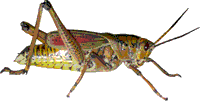Entomology Collections, General

Entomology Papers from Other Sources
Document Type
Article
Date of this Version
2009
Abstract
Flooding exposes terrestrial organisms to severe hypoxia. Among the best-studied insects that are frequently exposed to flooding are tiger beetle (Coleoptera: Cicindelidae) larvae. In previous studies with a limited number of species, a correlation was found between habitat and hypoxia tolerance. In the current study, we examined hypoxia tolerance among third instars of six Cicindela species that vary in habitat association; we also tested adult survival of these species. We found that larvae of the different species survived an average of between 60 and 120 h of submersion in severely hypoxic water at 20°C, with larvae that occur in dry sand having somewhat lower survival times. However, among larvae, there was no correlation between survival times and habitat risk of flooding. We found surprisingly high survival times among adult tiger beetles with a range of 10 h to 46 h. Adult Cicindela formosa formosa Say that are associated with dry sand and are active in the spring and fall survived submersion for >40 h, longer than any previously reported adult terrestrial insect exposed to hypoxia at moderate environmental temperatures. The lengthy survival times of adult tiger beetles are likely a result of adaptations to immersion during periods of inactivity. Our study suggests that additional insect species and life stages should be examined for hypoxia tolerance regardless of perceived threat of immersion.


Comments
Published in Annals of the Entomological Society of America 102(3): 462-466 (2009). Copyright 2009 Entomological Society of America.